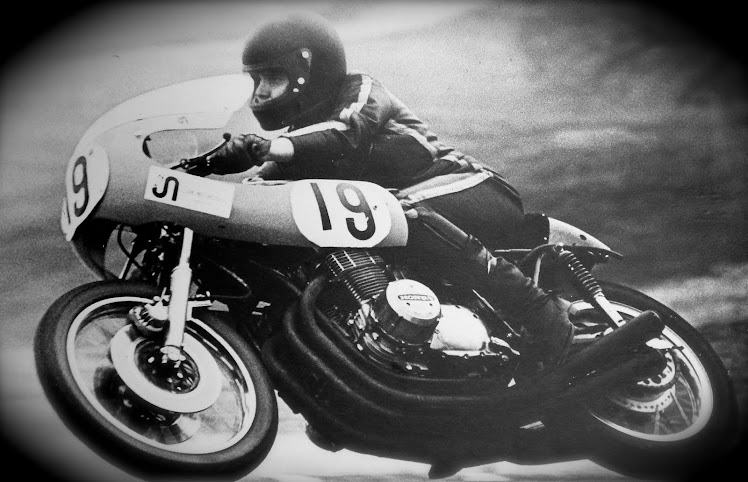

Cling on for dear life is a blog dedicated to CB 750 Café Racers and other cool motorcycle stuff.




This is a story of maybe the fastest CB750 ever, and hardly anyone has ever heard about it...
This is the story of one of the most eccentric challenges Honda has ever undertaken – the pursuit of the world land speed record. The was a skunk works project like mission that distracted a small but dedicated group of American Honda Employees for the better part of two years during the early 1970s.
Honda pursuit of the world land speed record was the brainchild of general manager of American Honda Masa Suzuki. Suzuki dedicated that it would be tremendous boost for Honda’s public relations effort if the company set a new absolute land-speed record for two-wheeled vehicles at the
Dubbed the Honda Hawk the machine was a conventional streamliner motivated by tandem turbocharger CB750 engines. The Hawk chassis was actually build by a Wisconsin-based company called Reaction Dynamics which had previously done development work on the record-holding, rocked powered Blue Flame streamliner. The Company spared absolutely no expense in creating the Hawk – a gorgeous machine, fitted with a sophisticated data-acquisition system that charted a dozen inputs, and high-tension drive chains that were packed in grease that cost $55 a quart. Despite this no-holds-barred attitude, the Hawk effort was never to achieve its goals.
According to Bob Jameson, one of the participants in the Hawk project, the effort was fatally flawed from the beginning. “First of, it was a PR project, not an engineering project”, Jameson says. “The project was pretty much governed by Honda’s advertising company – they prepared the contracts, established the sates of the runs – everything. And what they knew about running a land-speed record team, who knows?!"
But what was more troubling, Jameson says, was the attitude of the Honda bosses driving the project. Suzuki was a real ego guy, a fame and glory guy, a beat-your-chest guy. Jameson remembers. “He wanted to have the spotlight all to Honda, so we were alone on the salt”. This lack of experience, Jameson says, was the biggest stumbling block. With the exception of the limited help from Reaction Dynamics, the Hawk was entirely an internal project. And with the exception of Jameson, no one on the team had ever been to Bonneville before. The driver, an experienced road racer named John Mckibbon, had hardly exceeded
The Honda land-speed effort got off to a bad start things quickly got worse. Honda made its first land speed record attempt in the fall on 1971, immediately following the Bonneville Speed week. Conditions were less than cooperative: Weather during the first runs was everything you don’t want for a record attempt - including rain and strong crosswinds. There were also mechanical problems, including a non-functioning rev limiter that led to and epidemic of bend valve stems. Worse McKibbon was having a terrible time keeping the Hawk upright.
To create the Hawk, Reaction Dynamics had basically borrowed the front design from its earlier and more successful Blue flame. The only problem was that the Blue Flame was a tricycle chassis geometry did not appear to be compatible with the motorcycle chassis at speed. The result was that McKibbon and the Hawk fell down a lot – nearly every run. By the end of the first day, the once gorgeous Hawk was salt scarred on both sides and held together with duct tape. McKibbon did eventually cross the 300 mil per hour barrier, breaking the traps one time at
After a few fruitless days on the salt the Honda team swallowed its pride and placed a phone call to Don Vesco, the former Honda road racer and land-speed legend whose assistance they had earlier refused. Dix Erickson, another member of the team, raced down to Tesco’s shop in
During the off-season, the team constructed an entirely new Hawk, with a totally different body and chassis concept, but this second-generation machine never even made it to the salt. Funding was cut and the mission was aborted before the Hawk II could even be rolled out of the shop. Ironically, all the landspeed glory in the 1970s went to former Honda racer Don Vesco and his Yamaha and